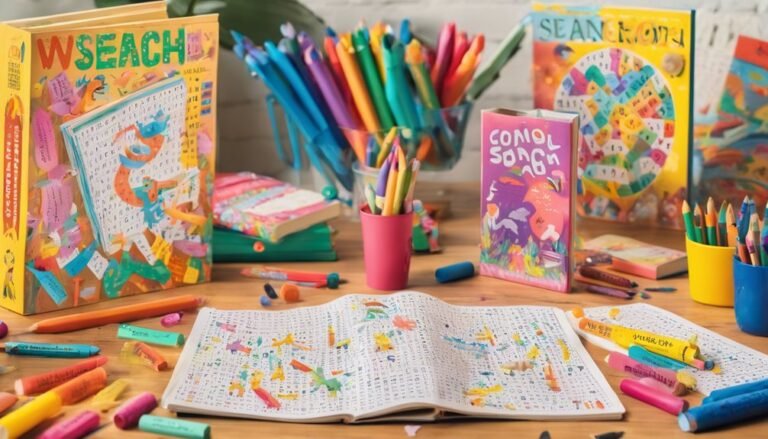Positive Discipline for Young Children
So, you think you’ve got this whole parenting thing down, huh? Well, let’s talk about discipline for a moment.
We all know that traditional methods like yelling and spanking are not the most effective ways to teach our little ones right from wrong.
But what is positive discipline and how can it help you navigate the joys and challenges of raising young children?
Well, buckle up, because we’re about to dive into a world of strategies and techniques that will not only make your life easier, but also foster a strong and loving relationship with your child.
Key Takeaways
- Positive discipline focuses on teaching children how to make good choices and learn from their mistakes.
- Building a strong parent-child connection through effective communication, trust, and respect is essential.
- Setting clear and consistent boundaries helps children understand what behavior is acceptable and develop important life skills.
- Promoting emotional intelligence, self-regulation, impulse control, and emotional regulation in children contributes to their overall development and well-being.
Understanding Positive Discipline
Understanding positive discipline is essential for effectively guiding and teaching young children. As a parent or caregiver, you play a crucial role in shaping their behavior and helping them develop important life skills. Positive discipline focuses on teaching children how to make good choices and learn from their mistakes, rather than using punishment or rewards to control their behavior.
One key aspect of positive discipline is developing empathy in children. By helping them understand and share the feelings of others, you’re fostering their ability to connect with and relate to people around them. This empathy not only helps them develop healthy relationships, but also promotes understanding and compassion towards others.
Another important element of positive discipline is fostering independence. Encouraging children to take responsibility for their actions and make decisions for themselves builds their confidence and self-esteem. By giving them opportunities to problem-solve and make choices within boundaries, you’re empowering them to become independent individuals who can navigate the world with confidence.
Understanding positive discipline isn’t about being permissive or lenient. It’s about setting clear expectations, providing guidance, and teaching children valuable life skills. By focusing on developing empathy and fostering independence, you’re laying a strong foundation for their emotional and social growth.
Building a Strong Parent-Child Connection
Building a strong parent-child connection is crucial for cultivating a healthy and nurturing environment for your child’s emotional and social development. As a parent, you play a vital role in fostering this connection, which can have a profound impact on your child’s overall well-being.
Here are three key strategies to help you build and strengthen that bond:
-
Effective communication strategies: Communication is the foundation of any relationship, and it’s especially important when it comes to your relationship with your child. Take the time to listen to your child attentively, without judgment or interruption. Show empathy and understanding by validating their feelings and experiences. Use positive language and encourage open dialogue, creating a safe space for your child to express themselves.
-
Nurturing a sense of trust and respect: Trust and respect are essential components of a strong parent-child connection. To build trust, be consistent in your words and actions. Follow through on your promises and be reliable. Respect your child’s individuality by allowing them to make age-appropriate decisions and expressing their opinions. Treat them with kindness, patience, and understanding, even in challenging moments.
-
Quality time and shared experiences: Spending quality time together is vital for building a strong bond with your child. Engage in activities that your child enjoys and create opportunities for shared experiences. Whether it’s playing games, reading together, or going on family outings, these moments create memories and strengthen your connection. Make it a priority to set aside dedicated time each day for one-on-one interactions, free from distractions.
Setting Clear and Consistent Boundaries
To promote healthy boundaries and create a structured environment for your child, it is important to establish clear and consistent guidelines. Setting boundaries helps children understand what is expected of them and what behavior is acceptable. It provides them with a sense of security and helps them develop self-discipline. By setting clear expectations, you are helping your child learn the boundaries of acceptable behavior.
One effective way to establish expectations is by using a table that outlines the rules and consequences. Here is an example:
| Expectations | Consequences |
|---|---|
| Listen when others are speaking | Time-out |
| Use kind words and actions | Loss of privilege |
| Clean up after yourself | Apologize and make amends |
| Follow directions | Loss of screen time |
| Show respect for others | Write a reflection |
By consistently reinforcing consequences when the boundaries are crossed, your child will learn the connection between their behavior and the outcomes. It is important to explain the consequences in advance, so your child knows what to expect. Remember to stay calm and firm when enforcing consequences, and always follow through.
Establishing clear and consistent boundaries will help your child develop important life skills such as self-control, responsibility, and respect for others. By providing them with a structured environment, you are setting them up for success in their future endeavors.
Teaching Problem-Solving Skills
One effective way to help your child develop problem-solving skills is by encouraging them to think critically and find solutions to their own challenges. This not only empowers them to become independent problem solvers but also helps them build resilience and confidence in their abilities. Here are three key techniques you can use to teach your child problem-solving skills:
-
Model problem-solving behavior: Children learn best by observing and imitating their parents or caregivers. By demonstrating effective problem-solving strategies in your own life, you provide your child with a valuable role model. Talk out loud about the steps you take to solve a problem, such as identifying the issue, brainstorming possible solutions, weighing the pros and cons, and making a decision.
-
Encourage critical thinking: Engage your child in open-ended discussions that promote critical thinking. Ask thought-provoking questions that challenge their assumptions and encourage them to consider multiple perspectives. Encouraging your child to think critically will help them develop the skills to analyze problems and come up with creative solutions.
-
Foster conflict resolution skills: Conflicts are a natural part of life, and teaching your child how to resolve them peacefully is essential. Teach them techniques such as active listening, expressing emotions effectively, and finding compromises. By equipping your child with conflict resolution skills, you empower them to navigate challenging situations and maintain healthy relationships.
Promoting Emotional Intelligence and Self-Regulation
Promoting emotional intelligence and self-regulation in young children is crucial for their overall development and well-being. As a parent or caregiver, you play an essential role in helping your child develop these important skills.
Emotional intelligence involves being aware of and understanding one’s own emotions, as well as recognizing and empathizing with the emotions of others. By teaching your child emotional awareness, you’re giving them the tools they need to navigate their feelings in a healthy and constructive manner.
One way to promote emotional intelligence is by modeling emotional awareness yourself. Show your child that it’s okay to express and talk about emotions openly. Encourage them to identify and name their feelings, and validate their experiences by actively listening and responding empathetically. This will help them develop a strong sense of self-awareness and emotional literacy.
Self-regulation, on the other hand, involves managing and controlling one’s impulses and emotions. It’s an essential skill for children to learn, as it helps them make thoughtful decisions and handle challenges effectively. Encourage your child to pause and think before acting on their impulses. Teach them strategies such as taking deep breaths, counting to ten, or finding a quiet space to calm down when they feel overwhelmed. By providing them with these tools, you’re helping them develop impulse control and self-discipline.
Promoting emotional intelligence and self-regulation in young children is a lifelong journey. By being a supportive and empathetic guide, you can help your child build a strong foundation for emotional well-being and healthy relationships. Remember, it’s never too early to start fostering these essential skills.
Frequently Asked Questions
How Can Positive Discipline Be Implemented in a Classroom Setting?
Incorporating positive discipline in a classroom setting involves effective classroom management and behavior modification techniques. By creating a supportive and nurturing environment, you can guide children’s behavior in a respectful and empathetic way.
What Are Some Effective Strategies for Dealing With Sibling Rivalry?
Dealing with jealousy and building strong sibling relationships can be challenging. However, there are effective strategies you can try. Encourage open communication, teach problem-solving skills, and promote fairness and empathy.
How Can Positive Discipline Help in Managing Tantrums and Meltdowns?
When it comes to managing tantrums and meltdowns, positive discipline can be a game-changer. By using techniques from Positive Discipline in the Classroom and adapting them to different temperaments, you can help your child navigate their emotions in a healthy way.
Are There Any Specific Techniques for Disciplining a Child With Special Needs?
When disciplining a child with special needs, it’s important to use specific techniques and take an individualized approach. Understand their unique challenges and abilities, and tailor discipline strategies accordingly.
How Can Positive Discipline Be Adapted for Children With Different Temperaments or Personalities?
When it comes to positive discipline, it’s important to consider the unique temperaments and personalities of children. For introverted kids, gentle and understanding approaches work best. For high-energy children, tailor discipline to channel their energy positively.
Conclusion
Congratulations on completing the article on positive discipline for young children! By understanding the principles of positive discipline, building a strong parent-child connection, setting clear boundaries, teaching problem-solving skills, and promoting emotional intelligence, you’re well-equipped to navigate the challenges of parenting.
Remember, discipline doesn’t have to be harsh or punitive; it can be a nurturing and empowering process that helps children develop important life skills.
Keep up the great work and continue fostering a positive environment for your little ones to thrive in.







